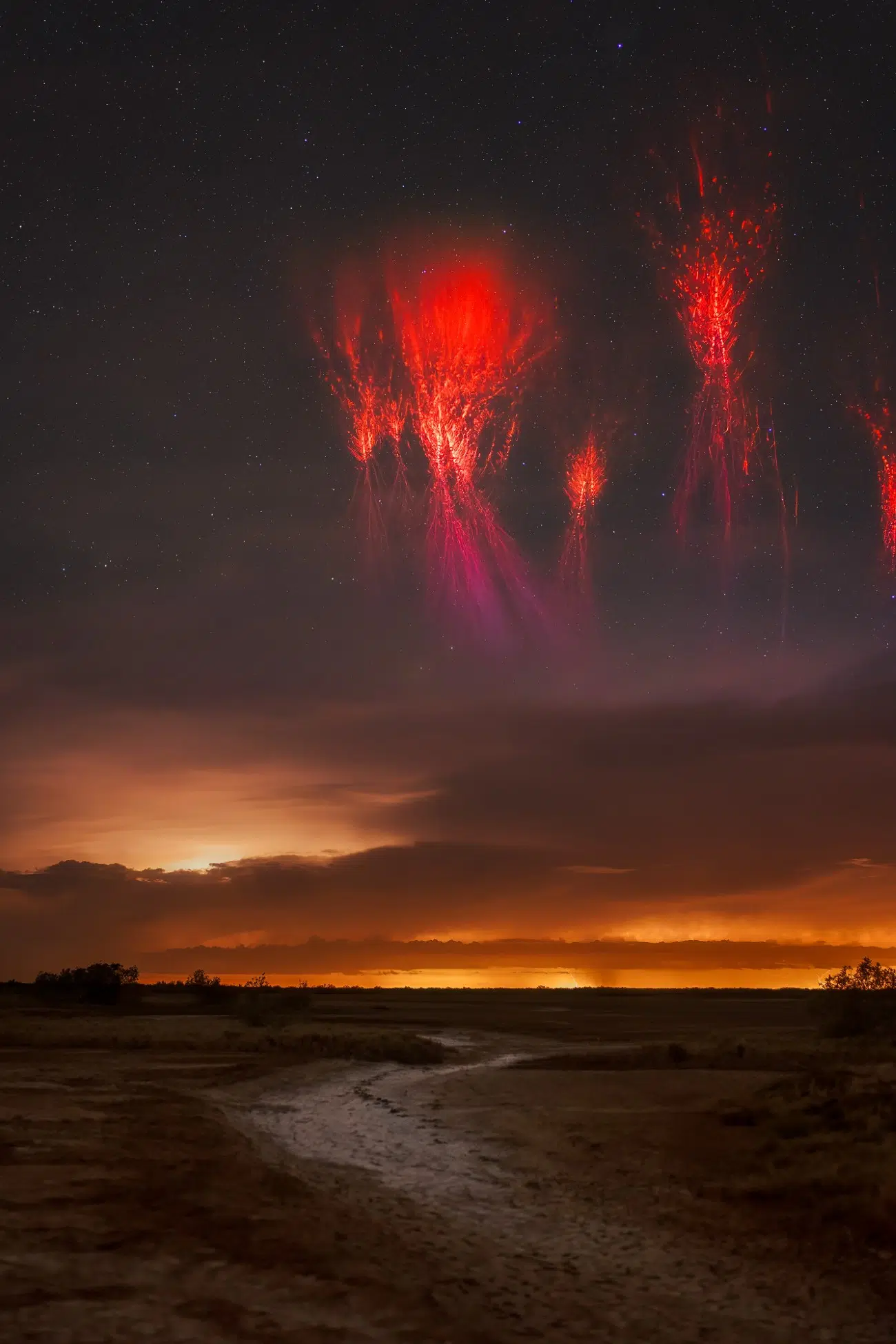

“The Watchers” by JJ Rao. First place, Capture the Dark
Location: Derby, Australia
“Rare red sprites dancing over the tidal flats of Western Australia. A large sprite like this exists for 10 milliseconds, up to 40x faster than an eye blink. This makes photographing them challenging and requires very dark skies. The central sprite is unusual. It’s known as a ‘jellyfish’ sprite, the largest and fastest of all sprites.”
Light pollution is a real problem, one that is growing at a rate of 10% a year according to non-profit DarkSky International. Not only do these lights block our view of the night sky, but they also disturb wildlife and have a negative effect on wellness. That’s where the winners of the 2025 Capture the Dark photo contest come in. By showing how beautiful the sky can be when the lights go out, DarkSky hopes to raise awareness about the negative impact of light pollution.
Now in its fifth year, the contest saw 2,284 submissions from more than 22 countries, focusing on everything from the Milky Way and comets to glowing wildlife and crescent moons. Judged by an expert panel, photographers were evaluated on their composition, technical skill, and adherence to DarkSky’s Principles for Responsible Astrophotography.
“Capture the Dark has become a key initiative in raising awareness, using the power of photography to illustrate not only the wonders of the night but also the impacts of light pollution through a series of contest categories,” said the organization in a statement. “The result is more than a gallery of stunning images—it’s a call to action to protect the night.”
Highlights include JJ Rao’s photo of rare red sprites in Western Australia, which won the Capture the Dark category. This phenomenon is technically challenging because it lasts for just a few milliseconds and requires total darkness. In the Creatures of the Night category, Oscar Leonardo Chavez Torres wowed the judges with his look at a scorpion in Mexico as it hunted in the desert.
In addition to the awarded categories, the public was able to vote on a People’s Choice Award, which a 12-year-old space enthusiast and aspiring astronaut won. Siddharth Patel used his mom’s phone to take the winning photo, which shows a comet streaking through the sky in Ontario, Canada.
Scroll down to see even more winners from the 2025 Capture the Dark photo contest and head over to the DarkSky website for the complete winners’ gallery.
Here are the winners of the 2025 Capture the Dark photo contest.
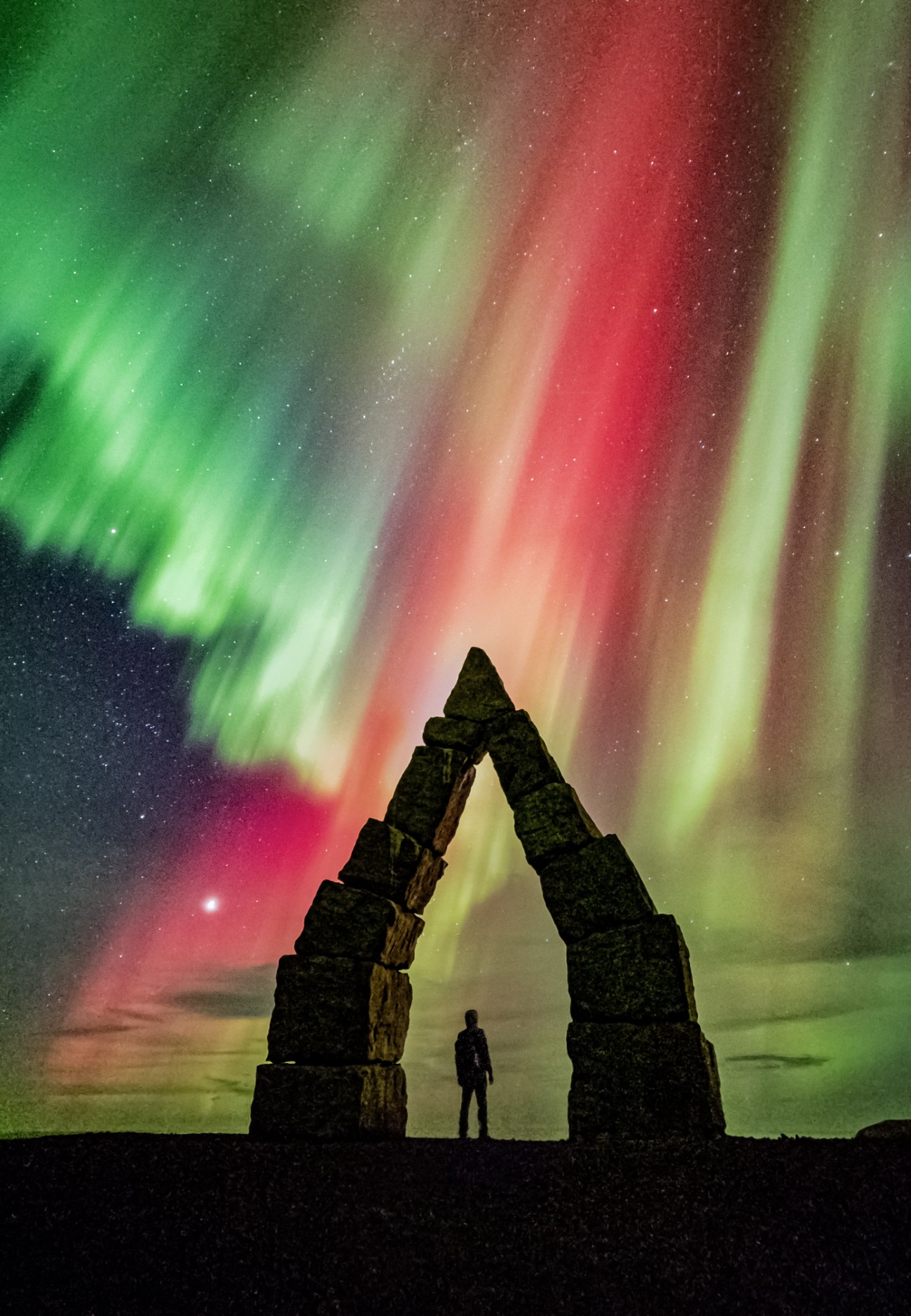

“A Gateway to the Universe” by Sadeq Hayati. First place, Mobile Nighttime Photography
Location: Raufarhöfn, Iceland
“On my last trip to Iceland, we followed the northern lights. There was a huge storm of aurora and I decided to record it with my phone for the first time! It was interesting that, with a small device in my hand, I could see the beauty happening in the sky in more detail and beauty.”


“Scorpion and Scorpio” by Oscar Leonardo Chavez Torres. First place, Creatures of the Night
Location: Hermosillo, Sonora, México
“Scorpions use the darkness to hunt in the desert, these organisms thrive in the dark nights of the desert, and even the moon can be enough light to drop their activity.“
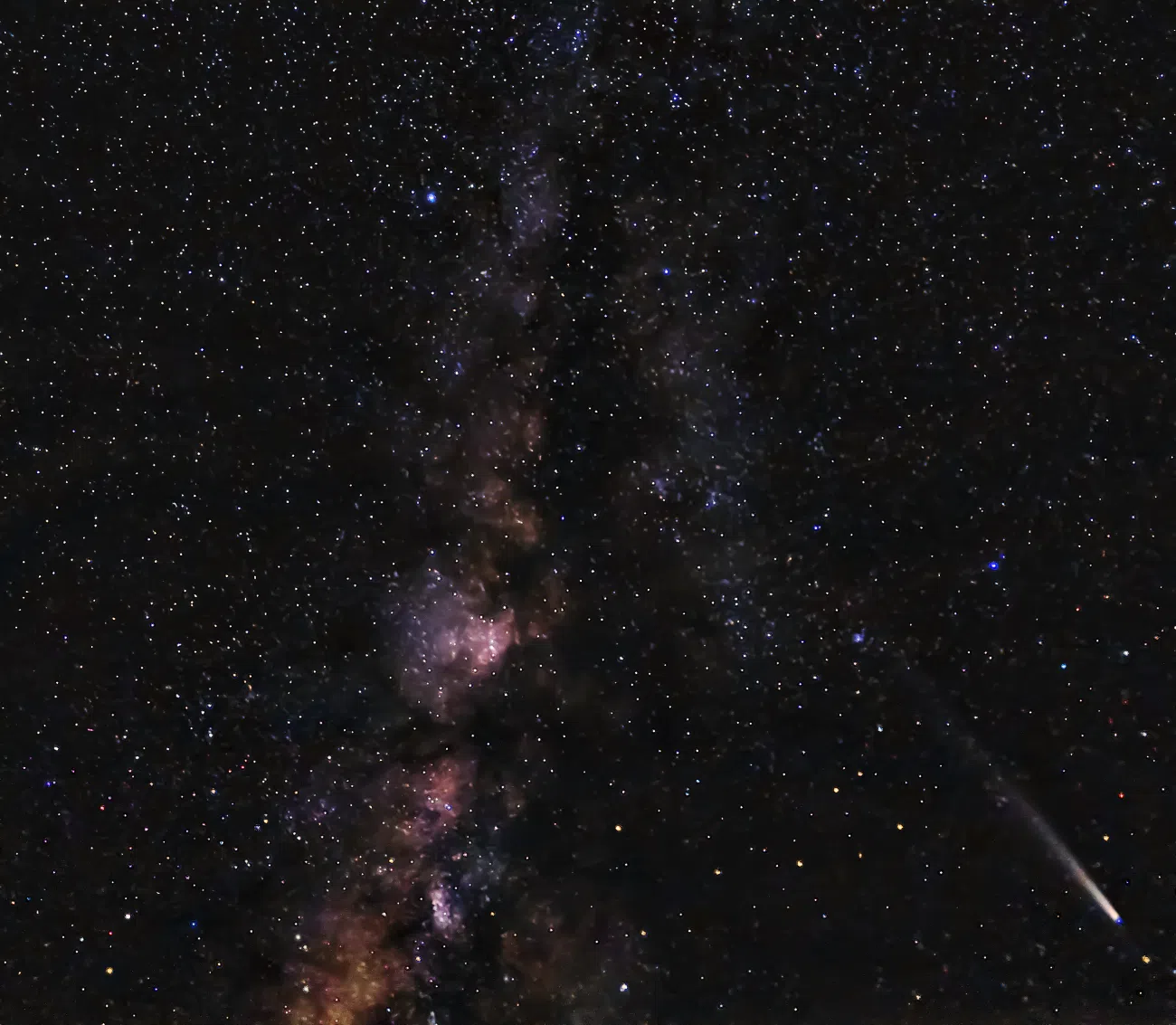

“Milky Way with Comet C/2023 A3” by Siddharth Patel. Winner, People’s Choice
Location: Fingal, Ontario, Canada
“I took this photo using my mother’s Samsung S21. I had to leave the city because I couldn’t see the comet at all, so I convinced my family to drive out with me. Under the darker Fingal sky, the comet and the Milky Way were both visible to the naked eye, and seeing them together blew my mind.”
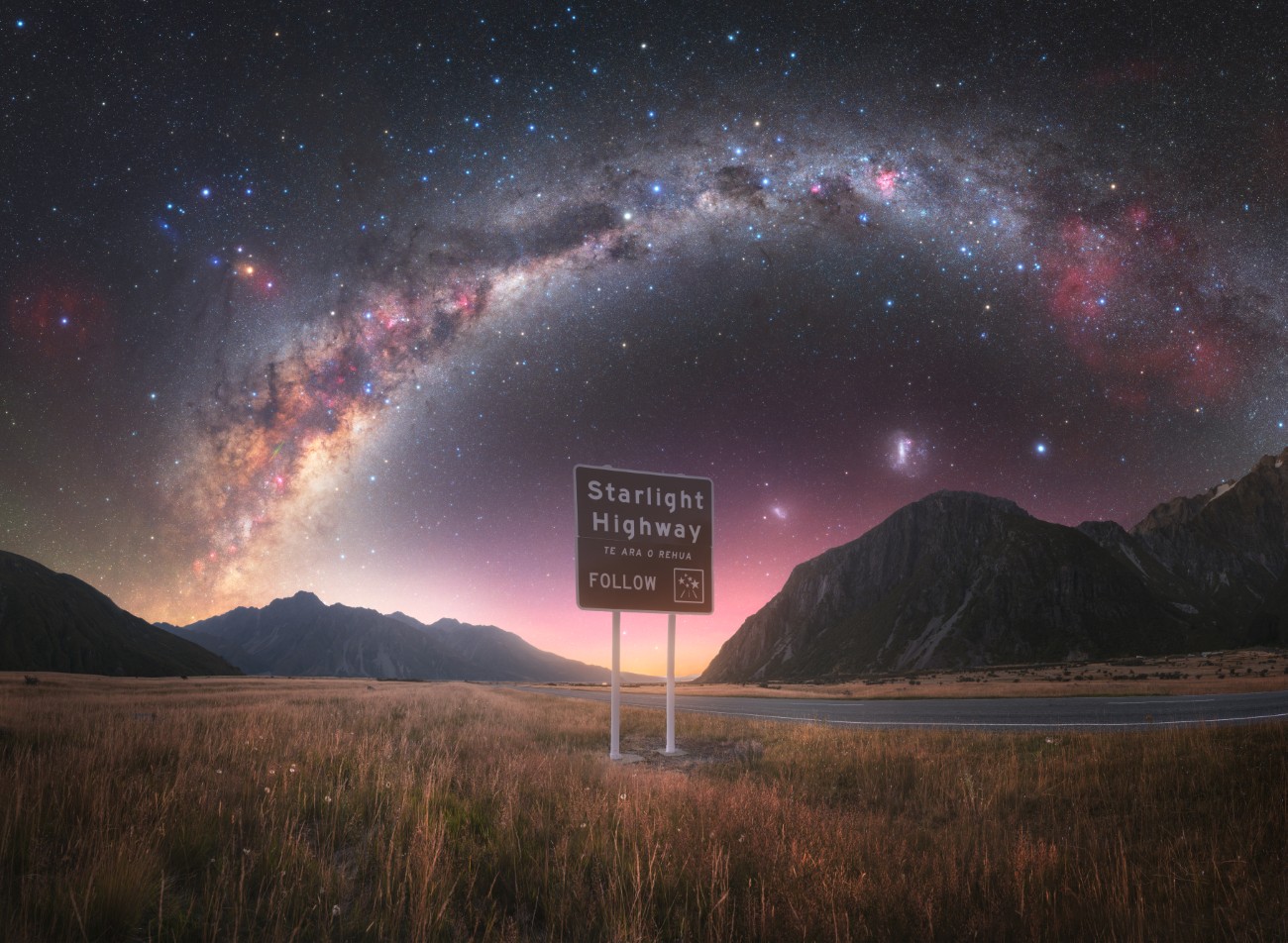

“Starlight Highway” by Tom Rae. First place, International Dark Sky Places
Location: Aoraki Mackenzie International Dark Sky Reserve, Canterbury, New Zealand
“The Starlight Highway sign is definitely one of the cooler signs to find on the road, and there is a good reason for it, as you can see! The sign marks the entrance to the Aoraki Mackenzie International Dark Sky Reserve—one of the most significant dark sky reserves on earth.”
The competition is run by DarkSky International, a non-profit focused on protecting the night sky.
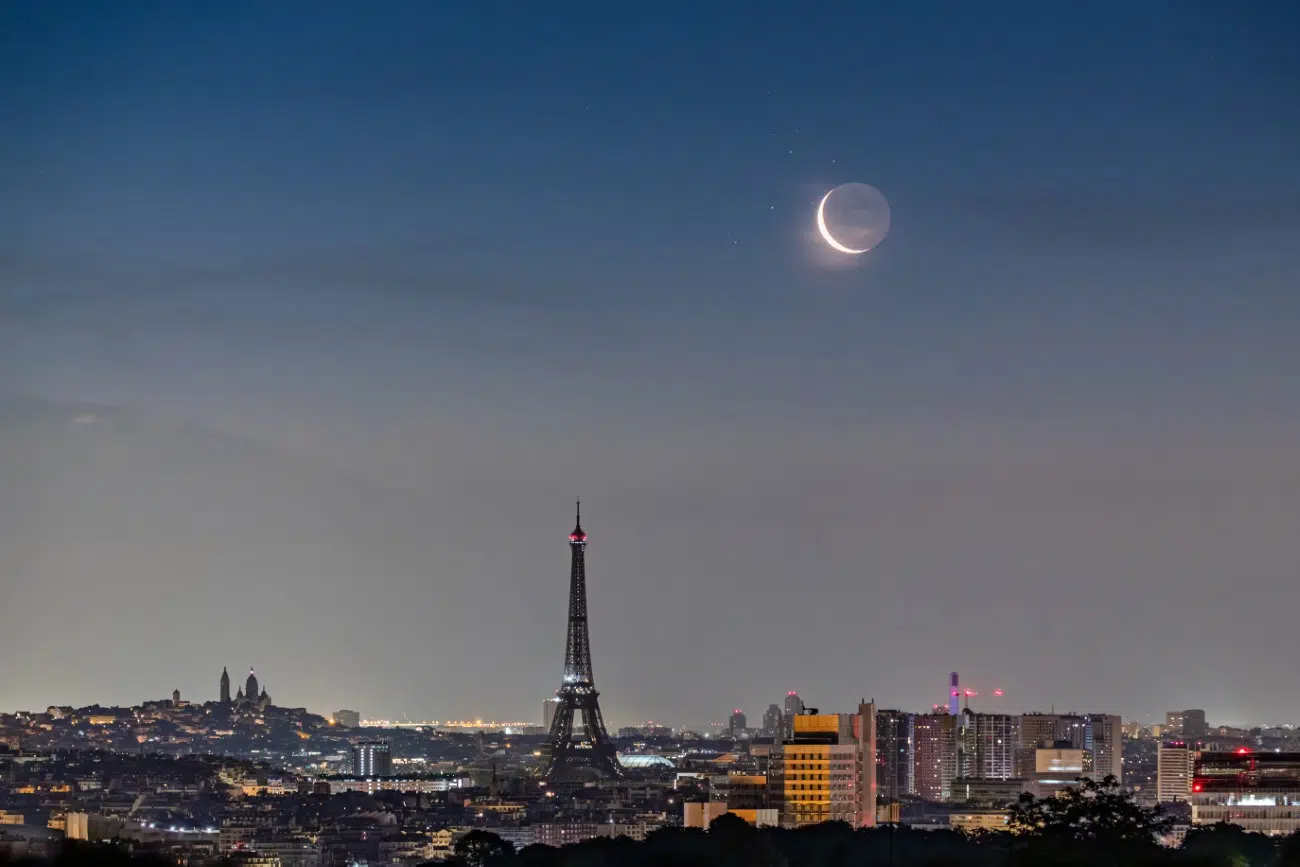

“Paris, Asleep In The Pre-Dawn Hours” by Gwenael Blanck. First place, Dark Sky Friendly Lighting and Design
Location: Paris, Île-de-France, France
“Paris is known as the “City of Lights,” but after midnight, many iconic landmarks like the Eiffel Tower and Sacré-Cœur are turned off to save energy and reduce light pollution. I took advantage of the darker, less light-polluted sky to capture the Pleiades above the city, from a beautiful viewpoint in Sèvres, just 8 km from the Eiffel Tower.”
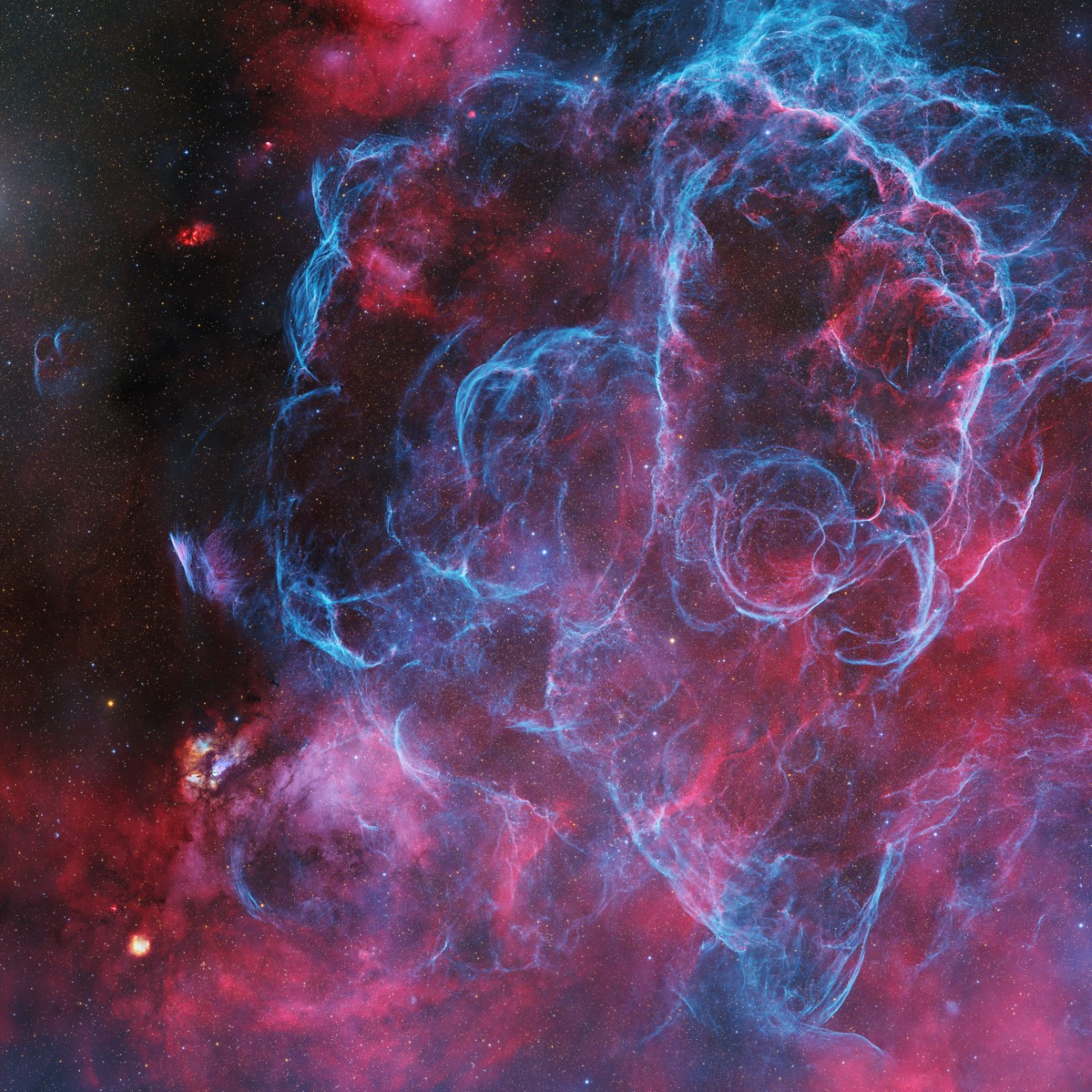

“Breathing Vela Supernova Remnant Mosaic” by Alpha Zhang. First place, Deep Sky Observations
“This is the most breathtaking nebula I’ve ever captured. The Vela Supernova Remnant is a target that no astrophotographer should miss in a lifetime. A four-panel mosaic covers the primary emission signals of the nebula. The OIII outer shell wraps around the ionized Ha and SII, forming a complex, layered structure that is beyond words.”
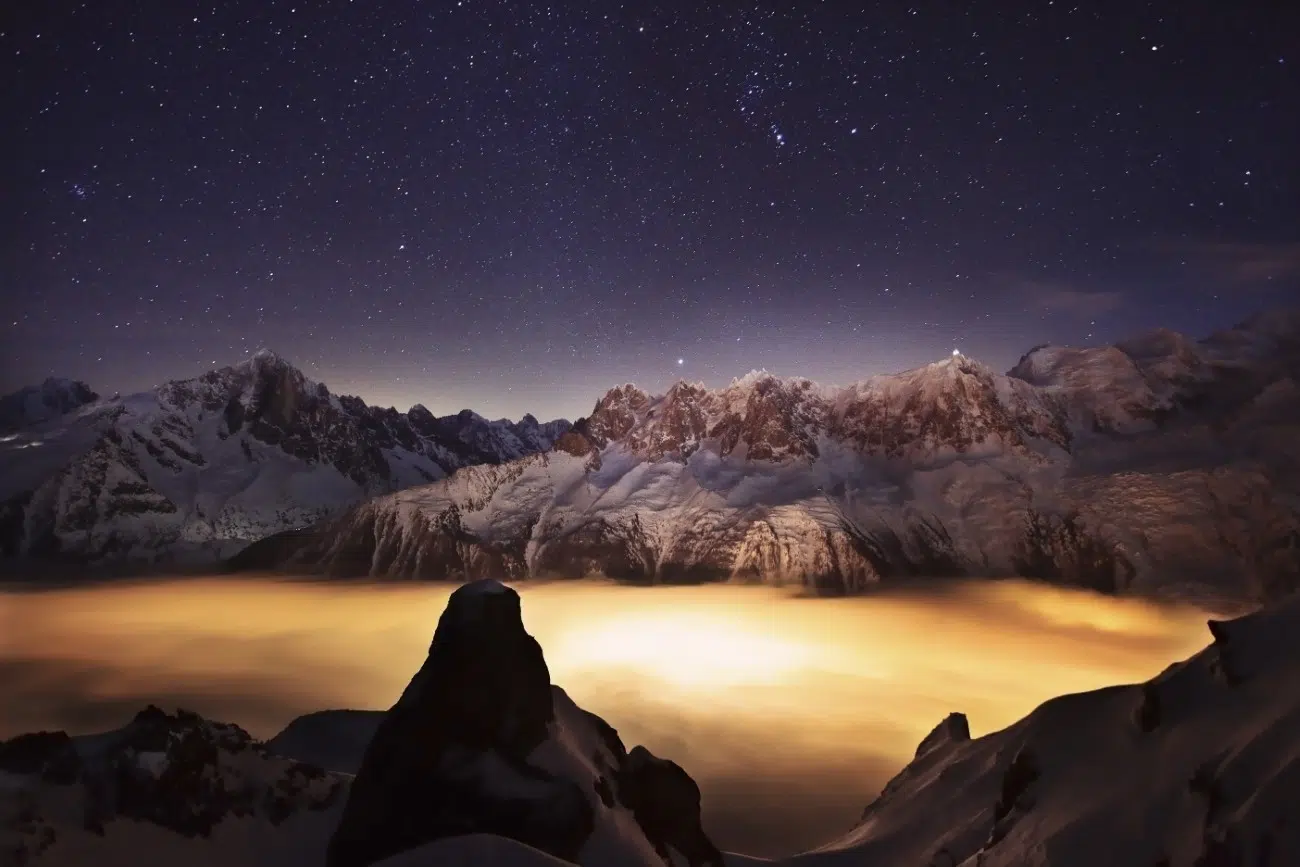

“Requiem for a Dream” by Ambre de l’AIPe. First place, The Impact of Light Pollution
“January, a few years ago, in the northern Alps, France. The tent is pitched in the snow, and a sea of clouds filters the light from the town of Chamonix. An incredible atmosphere… and it’s even more incredible to realize that the town, despite the clouds obscuring the light, shines right up to the summit of Mont-Blanc (on the far right of the photo)!”
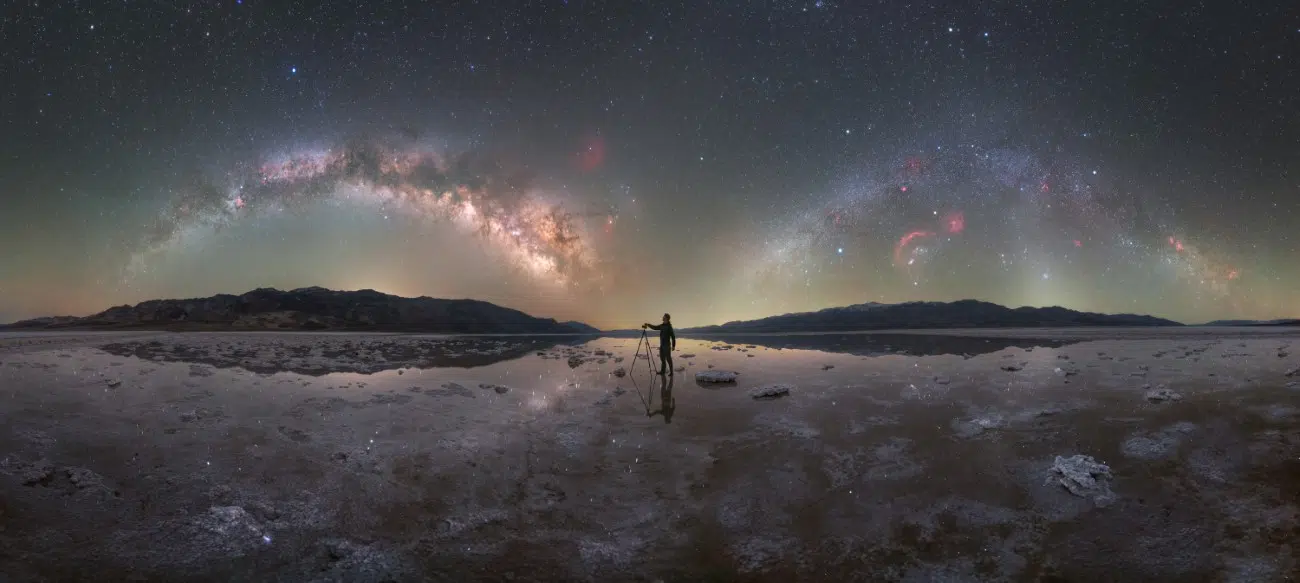

“Double Arch” by Dan Zafra. Second place, International Dark Sky Places
Location: Death Valley International Dark Sky Park, California, United States
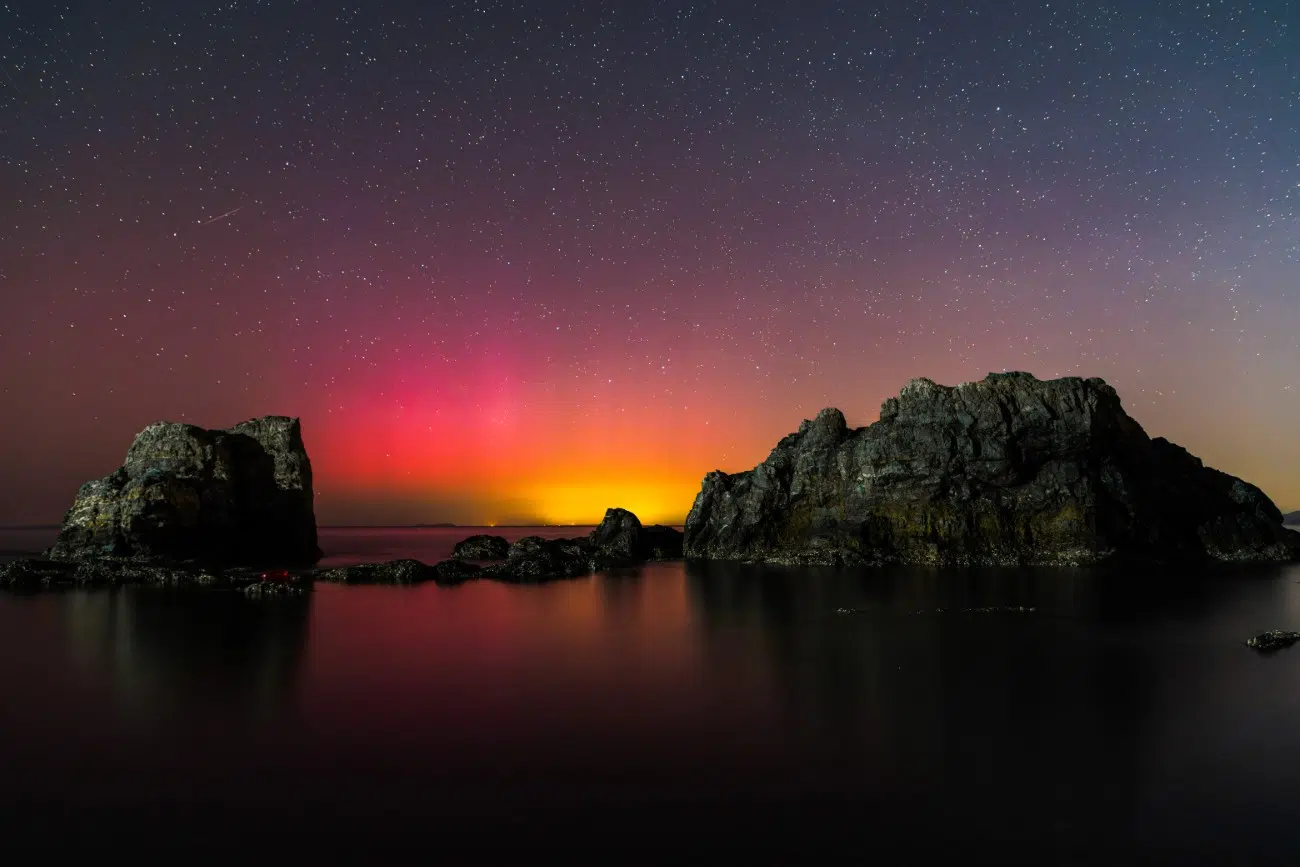

“Aurora at 38°N” by Haohan Sun. Second place, Young Astrophotographers
Location: Dalian, China
Specifically, they raise awareness about the issue of light pollution and how it affects our ability to see the stars.
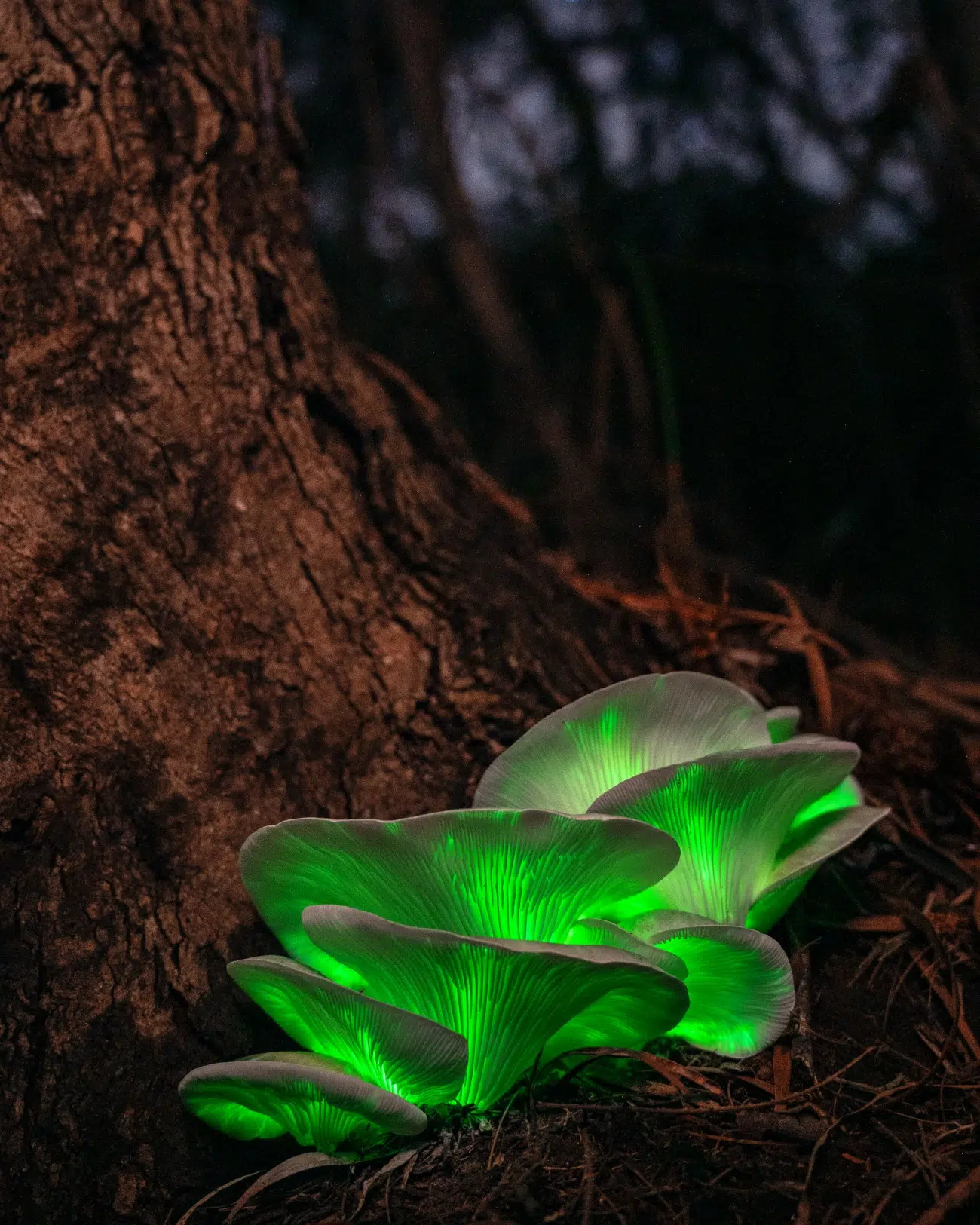

“The Perfect Ghost” by Will Hudson. Second place, Creatures of the Night.
Location: Grampians National Park, Victoria, Australia
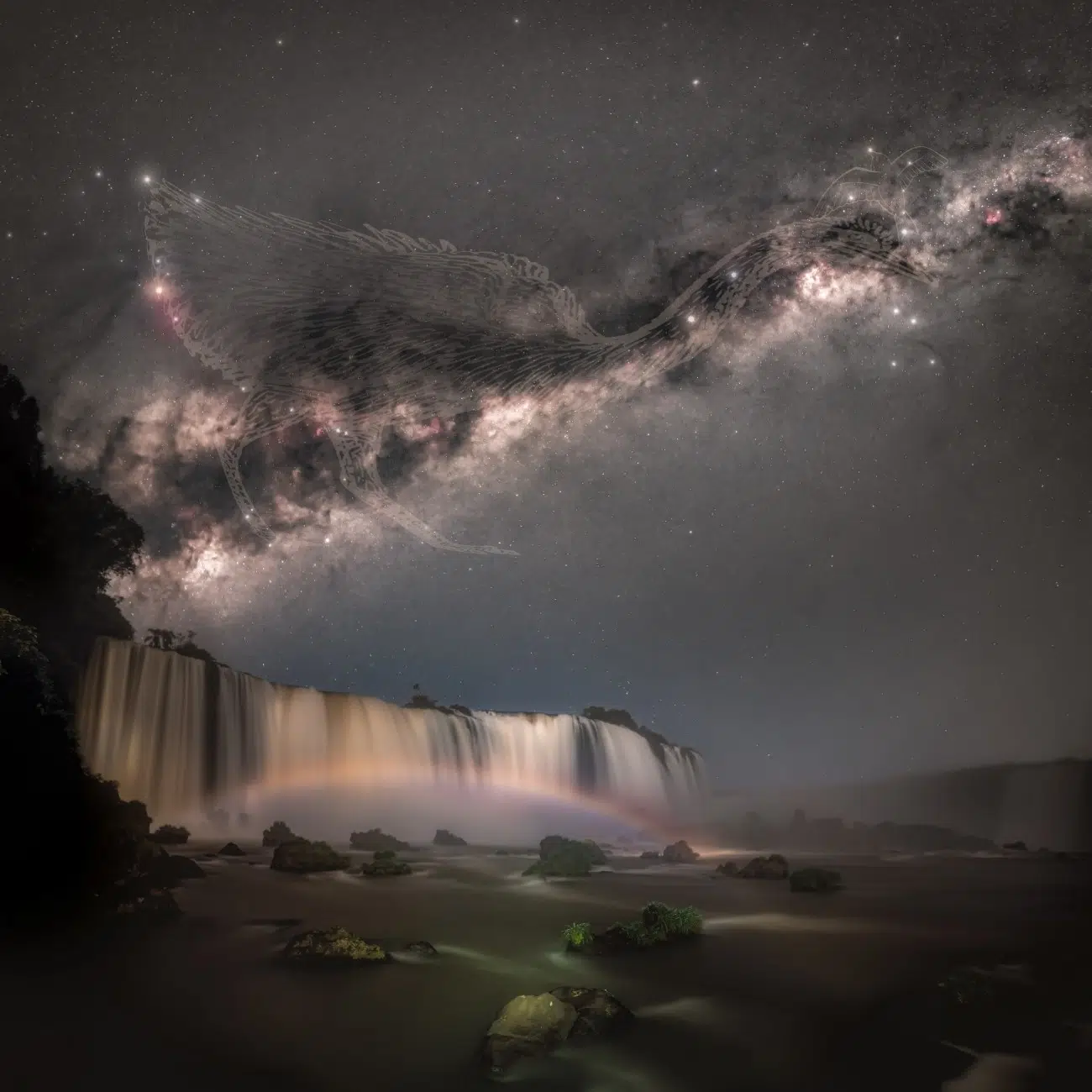

“Clash In Winter Sky: A Legend Tupi – Guaran” by Rodrigo Guerra. Second place, People’s Choice
Location: Iguaçu National Park, Brazil


“Tumacacor’s Secret” by Celeste Boudreaux. First place, Visit Tucson
Location: Tumacacori, Arizona, United States
“Every summer, Tumacacori hosts a small visitor that most don’t even know exists in Arizona: the southwest synchronous firefly! And every year, they welcome visitors to photograph them.”
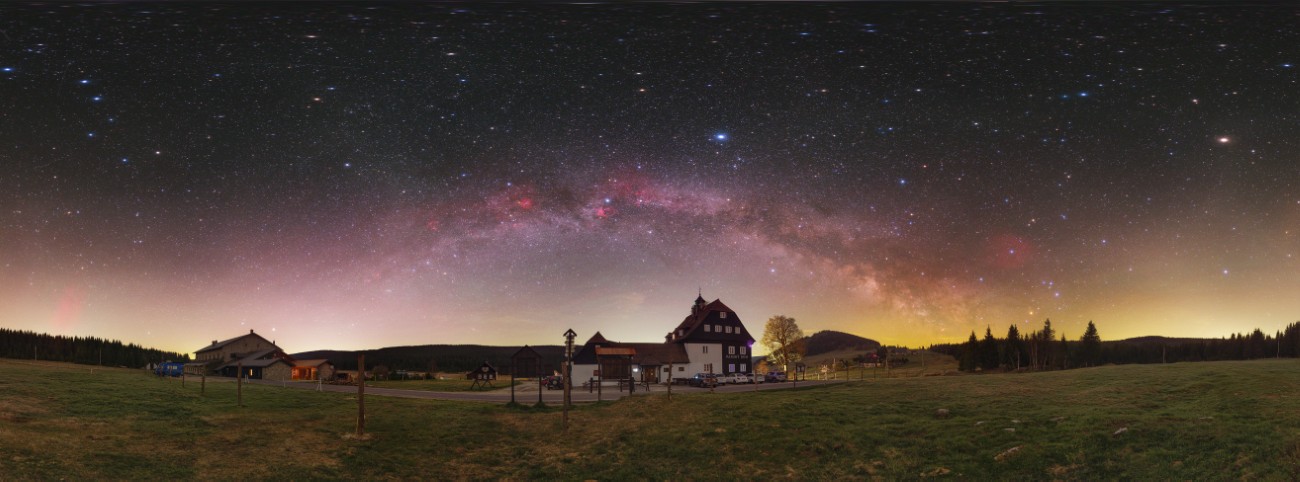

“Gems of Jizerka” by Oldřich Špůrek. First place, Young Astrophotographers
Location: Jizerka, Liberecký kraj, Czech Republic
“In May, I visited Jizerka, which is located in a dark Bortle 4 zone (and sometimes even reaching Bortle 3). This valley transforms completely after sunset. A few scattered huts, fleeting fog, and a lively yet peaceful atmosphere under the stars made this night unforgettable.”


“Kids and Comets” by Carly Stocks. First place, Visit Utah
Location: Tooele County, Utah, United States
“Chasing Comet C/2023 A3 (Tsuchinshan-ATLAS) with these two is one of my favorite memories of 2024. While it makes photography tricky, I love sharing moments under the stars with my children. They patiently waited for me to capture this comet for three consecutive nights. They asked questions, watched the comet through binoculars, and even posed for pictures.”


















